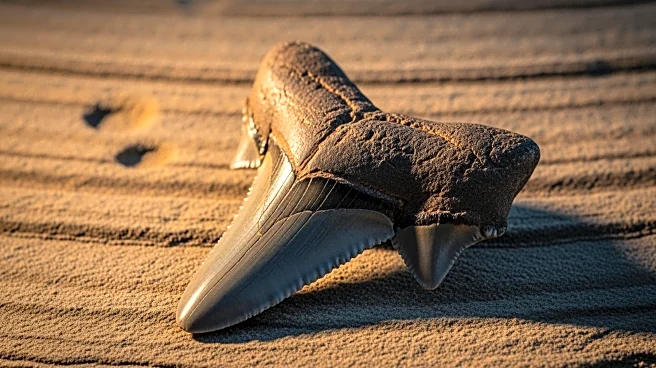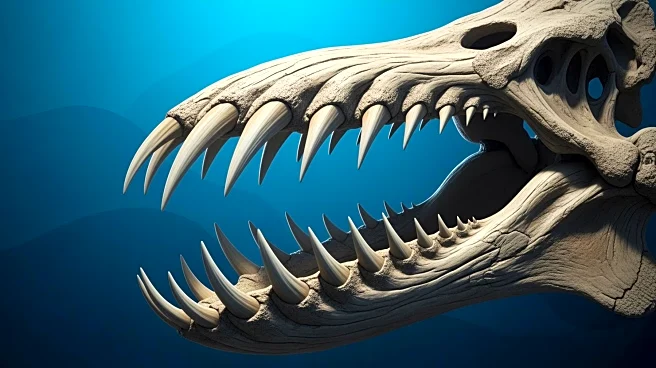What's Happening?
Recent fossil discoveries in Australia have unveiled a massive shark species that existed around 115 million years ago during the Age of Dinosaurs. These sharks, known as lamniforms, were early relatives
of modern sharks and shared the top of the food chain with giant marine reptiles. The fossils, primarily teeth and vertebrae, indicate that these sharks reached large sizes much earlier in their evolutionary history than previously thought. The research involved an interdisciplinary team analyzing the fossils to understand the size and characteristics of these ancient predators.
Why It's Important?
The discovery of these fossils provides significant insights into the evolutionary history of sharks, revealing that large body sizes developed much earlier than scientists believed. This challenges existing theories about shark evolution and highlights the complexity of prehistoric marine ecosystems. Understanding the evolution of apex predators like sharks can inform current conservation efforts and provide context for the ecological roles of modern sharks. The findings also contribute to the broader understanding of marine life during the Age of Dinosaurs.














